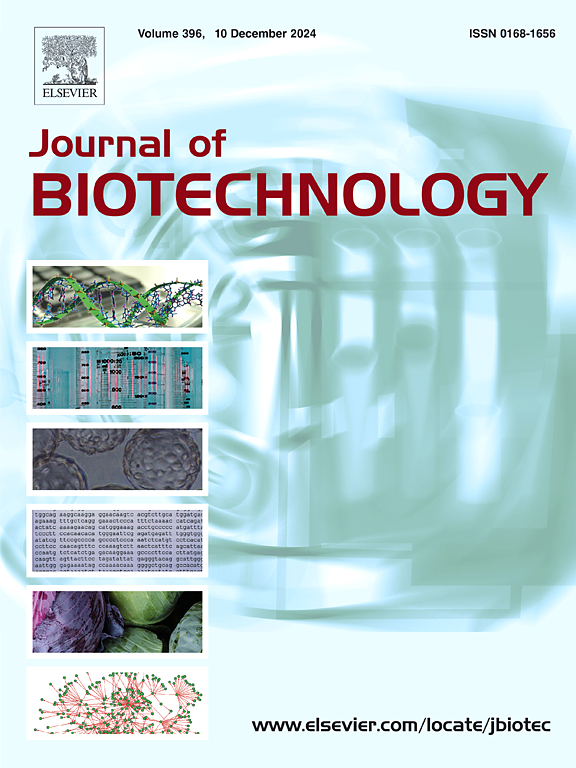Efficient spermidine production using a multi-enzyme cascade system utilizing methionine adenosyltransferase from Lactobacillus fermentum with Reduced Product Inhibition and Acidic pH Preference
IF 4.1
2区 生物学
Q2 BIOTECHNOLOGY & APPLIED MICROBIOLOGY
引用次数: 0
Abstract
Methionine adenosyltransferases (MATs; EC 2.5.1.6) are key enzymes that catalyze a crucial step in the spermidine biosynthesis pathway. Due to MAT's significant product inhibition, S-adenosylmethionine (SAM) and spermidine production faces challenges. We evaluated MATs from 20 lactic acid bacteria (LAB) to identify enzymes with acidic preference and lower susceptibility to product inhibition. Lactobacillus fermentum's MAT (LfMAT) emerged as a candidate with desirable characteristics. LfMAT exhibited strong activity in acidic environments, maintaining over 85 % activity between pH 6.0–8.5 for 60 min, with peak efficacy at pH 7.0. LfMAT produced 4.2 mM SAM from 5 mM substrate, indicating reduced product inhibition. Ultimately, using an in vitro multi-enzyme cascade system containing LfMAT, S-adenosylmethionine decarboxylase, and spermidine synthase, we successfully produced 12.9 g·L−1 of spermidine. This study establishes a cascade reaction platform, offering a novel approach for the efficient synthesis of spermidine and other polyamines.
利用发酵乳杆菌蛋氨酸腺苷转移酶的多酶级联系统高效生产亚精胺,降低了产物抑制和酸性pH偏好。
蛋氨酸腺苷转移酶;EC 2.5.1.6)是催化亚精胺生物合成途径中一个关键步骤的关键酶。由于MAT显著的产物抑制作用,s -腺苷蛋氨酸(SAM)和亚精胺的生产面临挑战。我们对来自20种乳酸菌(LAB)的MATs进行了评估,以确定具有酸性偏好和对产物抑制敏感性较低的酶。发酵乳杆菌的MAT (LfMAT)是一种具有理想特性的候选物质。LfMAT在酸性环境中表现出较强的活性,在pH 6.0-8.5之间保持超过85%的活性60分钟,在pH 7.0时达到峰值。LfMAT从5mM衬底产生4.2mM的SAM,表明产物抑制作用降低。最终,我们利用含有LfMAT、s -腺苷甲硫氨酸脱羧酶和亚精胺合酶的体外多酶级联系统,成功地合成了12.9g·L-1的亚精胺。本研究建立了一个级联反应平台,为高效合成亚精胺和其他多胺提供了新的途径。
本文章由计算机程序翻译,如有差异,请以英文原文为准。
求助全文
约1分钟内获得全文
求助全文
来源期刊

Journal of biotechnology
工程技术-生物工程与应用微生物
CiteScore
8.90
自引率
2.40%
发文量
190
审稿时长
45 days
期刊介绍:
The Journal of Biotechnology has an open access mirror journal, the Journal of Biotechnology: X, sharing the same aims and scope, editorial team, submission system and rigorous peer review.
The Journal provides a medium for the rapid publication of both full-length articles and short communications on novel and innovative aspects of biotechnology. The Journal will accept papers ranging from genetic or molecular biological positions to those covering biochemical, chemical or bioprocess engineering aspects as well as computer application of new software concepts, provided that in each case the material is directly relevant to biotechnological systems. Papers presenting information of a multidisciplinary nature that would not be suitable for publication in a journal devoted to a single discipline, are particularly welcome.
 求助内容:
求助内容: 应助结果提醒方式:
应助结果提醒方式:


